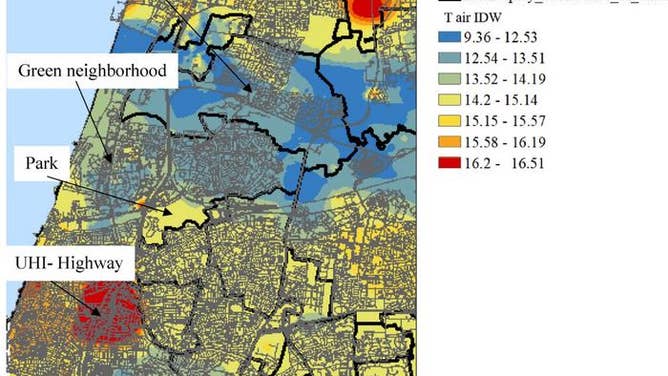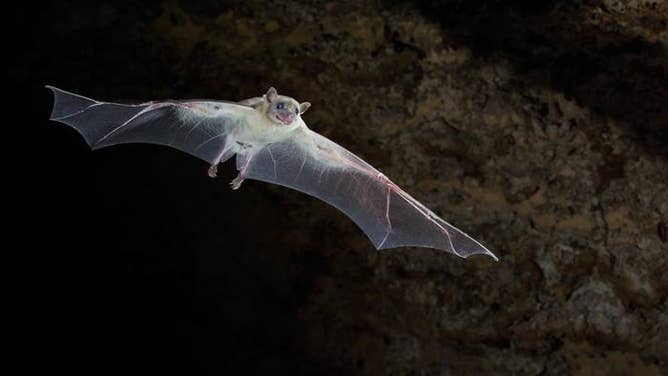Bats act as ‘flying meteorological stations’ detecting urban heat islands, study shows
Tel Aviv University biologists and zoologists attached small heat sensors to Egyptian fruit bats from an urban colony and released them in downtown Tel Aviv. The team says the bats mapped air temperatures over the city center, a major highway and parks.
Urban Heat Islands explained
Urban Heat Islands Explainer: Why are cities warmer than most other locations.
TEL AVIV, Israel – With their precise flight, bats make the perfect heat sensors to detect the urban heat island effect at night when it’s most obvious, according to a new study using the winged creatures.
An urban heat island refers to city areas being warmer than more rural areas because buildings and concrete soak up heat from the sun and keeps temperatures in the city warmer by several degrees. The effect is more noticeable at night, with cities being between 2 and 5 degrees Celsius (3.6 and 9 degrees Fahrenheit) warmer than neighboring suburbs.
Tel Aviv University biologists and zoologists attached heat sensors to Egyptian fruit bats from an urban colony and released them in the downtown Tel Aviv area. The team said the bats mapped air temperatures over the city center, a major highway and parks between 8 p.m. and 2 a.m. The bats found their way back to their home, in the process flying over different areas, including the city center, Ayalon Highway, Yarkon Park and Herzliya.
THESE ARE THE 5 US CITIES WITH THE MOST PEOPLE LIVING IN URBAN HEAT ISLANDS
The research team called this new approach "biologically-assisted sampling."
According to the results published this week in the journal Applied Geography, the map created with bat data reveals areas over a major highway can be up to 5 degrees Celsius (9 degrees Fahrenheit) warmer than areas over a park during the winter months.

IDW interpolation map between different sampled locations during the winter. ( Image: Tel Aviv University)
Tel Aviv University Professor and study co-author Alexandra Chudnovsky said that urban heat islands are a well-known phenomenon but can be difficult to measure for a number of reasons.
"Placing stationary measuring stations on every street is nearly impossible, and deploying individuals with mobile sensors requires significant financial resources," Chudnovsky said.
Drones would require permits to fly in urban areas, and there are flight limitations because of charging.
Study author Professor Yossi Yovel said the team decided to use bats because they are known for their navigation skills and familiarity with urban environments.

Egyptian fruit bat. (Image credit: Tel Aviv University)
BAT SPECIES COULD BE RECLASSIFIED AS 'ENDANGERED' AS FUNGUS CONTINUES KILLING OFF POPULATION
"Bats are more adept pilots than drones," Yovel said. "They can fly 100 kilometers in one night, and they are active exactly when the heat island phenomenon is at its peak – at nighttime."
To verify the data, the team also used mobile metrological stations and sent individuals with similar heat sensors to different parts of the city.
The research team plans to use other urban animals to study more environmental impacts.
"Just as the bats helped us map Urban Heat Islands, pigeons can be used to effortlessly map urban air pollution, saving us a great deal of money and years of painstaking research," Chudnovsky said.
